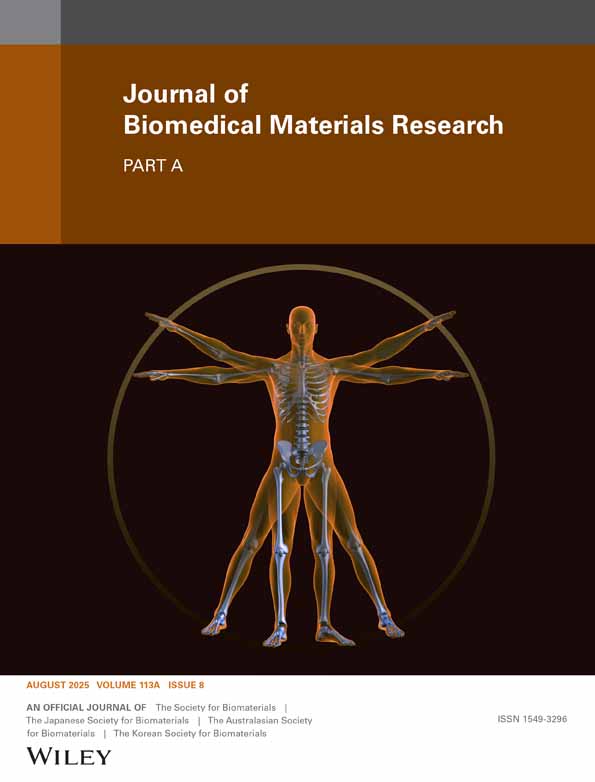Behavior of MG-63 cells on nylon/chitosan-blended membranes
Abstract
In this work, the properties of nylon, chitosan, and their blended membranes were investigated by scanning electron microscopy (SEM), differential scanning calorimetry (DSC), and wide-angle X-ray diffraction analysis. The SEM photographs show that the undulating surface of the nylon membrane became less obvious by blending with chitosan. The DSC and X-ray diffraction analysis show that constitutionally different features in the combination of two polymer chains were revealed, suggesting that nylon and chitosan are immiscible at the microscopic level in the blended membranes. Furthermore, an attempt was made to understand whether the two components contribute independently to the adhesion, growth, and activation of MG-63 osteoblastlike cells. The cell adhesion increased with increasing chitosan content, indicating that the affinity between the cells and the membranes increased with increasing chitosan content. Although the blended membranes with higher nylon content exerted an inhibitory effect on cell adhesion, cells cultured on the nylon membrane proliferated at higher rates and the nylon membrane was the least stimulating of MG-63 cell cytokine production over a 4-day period when compared with all the other membranes. Combined with the result of cell growth and cell activation, the chitosan content in the blended membrane did not proportionally influence the behavior of MG-63 cells. It is proposed that cell's size was larger than the scale of nylon or chitosan domain in the blended membranes because of the incomplete miscibility between them. Therefore, even if the composition of the blended membranes is systematically changed, every cell covers a multiphase surface that is considered a totally new material for cells. Consequently, cell growth and cell activation on a blended membrane are not simply proportional to their composition. In contrast, cell adhesion is a simpler process, like a physical adsorption process, which is related to the bulk property of a blended membrane. © 2003 Wiley Periodicals, Inc. J Biomed Mater Res 64A: 606–615, 2003




